Butiran Crossover Ford Puma Sports Di Sini
Adakah ia akan datang ke Malaysia? Kita kena tunggu dan lihat.
Ford baharu sahaja berkongsi butiran mengenai ‘crossover sukan’ baharu Puma mereka. Ramai di antara kamu mungkin tidak pernah dengar tentang Ford Puma dan fikir ini adalah kali pertama Ford menggunakan nama itu. Sebenarnya, Ford telah menggunakan nama Puma sebelum ini untuk Coupe 1997 mereka yang serupa macam Hyundai Coupe awal-awal dulu. Ford Puma awal ini tidak pernah secara rasmi datang ke Malaysia kerana ia dijual di Eropah selama beberapa tahun. Pada tahun 1997 pada pelancarannya, Ford Puma pada awalnya hanya tersedia dengan enjin 1.7 liter. Dibangunkan dengan Yamaha enjin revolusi dan tork menggunakan pemasaan camshaft berubah-ubah untuk menghasilkan 123bhp.
Unit lebih kecil 1.4 liter yang menghasilkan 89bhp tiba pada bulan Januari dan walaupunia dua saat penuh perlahan untuk ke 60bsj berbanding yang 1.7 liter, ia tidak pernah terasa lembap.
Dengan berat kira-kira 1,040kg, jumlah kuasa itu adalah mencukupi untuk memberikan prestasi yang baik untuk kereta itu. Versi paling popular memecut dari 0 hingga 100km / j dalam 8.6 saat dan dapat memecut dari 48 hingga 112km / j dalam 8.8 saat.
Sekarang ada Puma semua baharu dan ia adalah sebuah crossover. Ford Puma yang baharu ini adalah crossover kompak SUV yang diilhami SUV yang menyusun reka bentuk luaran yang menakjubkan, ruang barang yang tidak dikompromi dalam kelas, dan teknologi powertrain lembut hibrid yang canggih.

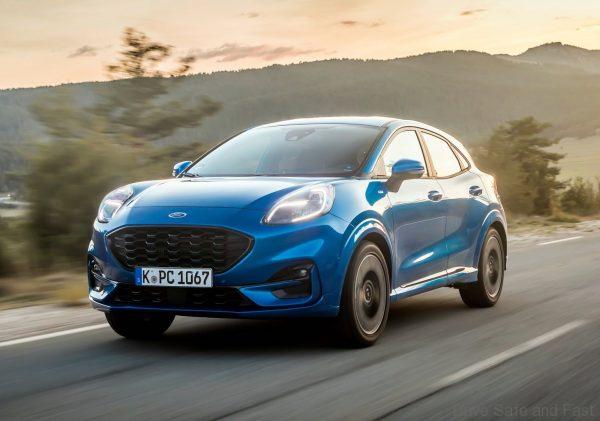






KENYATAAN MEDIA: The new Ford Puma introduces a new chapter in Ford’s design identity with charismatic styling cues including distinctive wing-top mounted headlamps and athletic, aerodynamic lines. Compact crossover proportions deliver a raised ride-height for a confidence-enhancing driving experience, and support class-leading uncompromised luggage capacity of 456 litres.
Powerful, responsive performance and optimised fuel efficiency is delivered for Puma customers using Ford’s EcoBoost Hybrid 48-volt technology. The mild-hybrid powertrain seamlessly integrates electric torque assistance with a low-friction, three-cylinder 1.0 litre EcoBoost petrol engine to deliver up to 155 PS.
Advanced driver assistance technologies delivering a simpler and less stressful driving experience include:
- Adaptive Cruise Control with Stop & Go, Speed Sign Recognition and Lane Centring, for effortlessly negotiating highway and stop-start traffic
- New Local Hazard Information, which can inform the driver of hazardous situations in the road ahead before they become visible to the driver or vehicle sensors
- Ford Puma is also the first vehicle in its segment to offer hands-free tailgate and Lumbar Massage Seat comfort and convenience technologies.
The new Puma joins Ford’s expanding line-up of SUV and SUV-inspired crossover, including the Fiesta Active, Focus Active, EcoSport, Kuga, Edge, and the all-new Explorer Plug-In Hybrid.
Ford Puma went on sale at the end of 2019, and will be produced with exceptional craftsmanship and quality at Ford’s Craiova Assembly Plant, Romania, following nearly €1.5 billion investment since 2008.


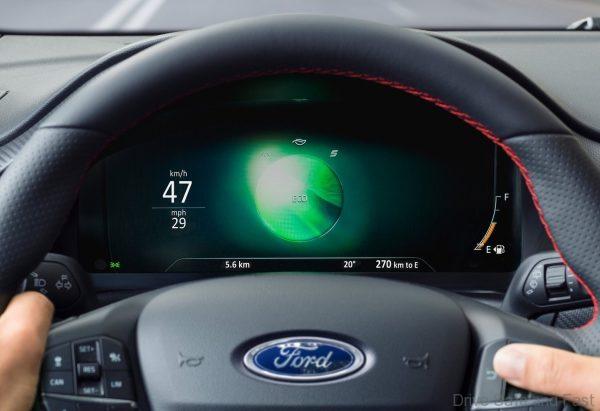

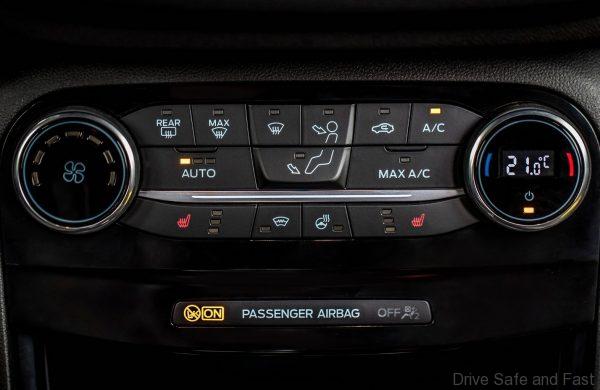
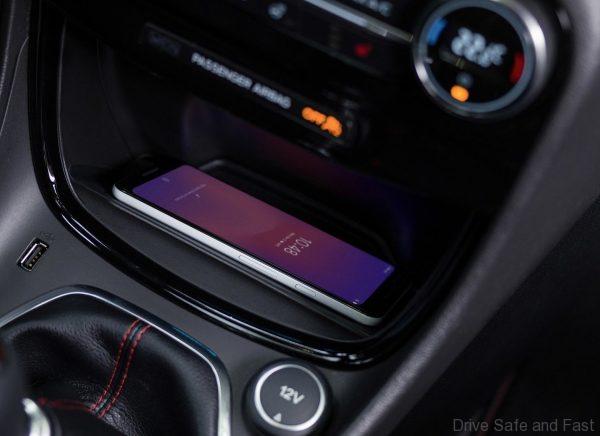

Evocative design meets class-leading practicality
Stylish, sporty and seductive, the new Ford Puma optimises Ford’s B-car architecture using an optimised wheelbase and track to deliver head-turning SUV proportions.
Ford Puma features a low, sloping roofline for a dramatic, instantly recognisable silhouette, and bucks the trend for wedge-style crossover side profiles with an “anti-wedge” design that features a flatter belt-line to deliver balanced proportions. Ford’s design team created highly emotional surfacing over the distinctively proportioned stance of the vehicle, and alongside the engineering team, delivered uncompromised style, access and load-space.
Sensual surfacing continues along the sides of the Puma, with pronounced wheel arches amplifying the sporty character. The expressive front-end features intricately designed “canoe-shaped” headlamps that sit high on the wings, while the LED fog lamps are positioned directly below, integrated into the front air curtain inlets that guide airflow across the front wheels to reduce turbulence for improved aerodynamics. Extending forward to the instantly recognisable front grille, the headlamps give Ford Puma a bold, aerodynamic front design and an approachable face.
The amplified proportions of Puma are enhanced further by a unique “floating” A-pillar design. This uninterrupted connection of belt line to cowl positions the visual mass of the cabin further rearward, delivering a powerful yet distinctly elegant silhouette.
The new Puma crossover is introduced with distinctive personalities including the sporty Ford Puma ST-Line and stylish Puma Titanium, reflecting individual customers’ preferences.
Puma Titanium features unique Pearl Grey machined 18-inch alloy wheels, and chrome elements for the grille, side skirts and fog lamps. The rear diffuser and skid plate are finished in metallic grey, and the window surrounds in high gloss black. Inside, Ford Puma Titanium is offered with a leather-effect steering wheel, wood-effect appliques for the cluster bezel and instrument panel, and distinctive fabric inserts for the door interiors.
The Ford Performance-inspired Puma ST-Line is offered with 18-inch standard or 19-inch optional matt black machined alloy wheels and a sports suspension with specially tuned springs and shock absorbers. At the front, the ST-Line grille features matt black elements and a high-gloss surround, high-gloss foglamp surrounds, and an optional larger, functional roof-spoiler.
Bold signature ST-Line lower wing elements direct air to the air-curtain inlets. Inside, the Puma ST Line features a flat-bottomed steering wheel and signature red stitching – also available on the optional partial leather seats. Alloy pedals, an aluminium gear shifter and signature black headliner further heighten the sporty character.
A palette of 10 vibrant exterior colours includes Blazer Blue, Frozen White, Race Red, Solar Silver, Agate Black, Lucid Red, Grey Matter, Desert Island Blue, Magnetic and Metropolis White.
Ford Puma’s seductive styling belies unprecedented compact crossover practicality, supported by innovative rear stowage solutions that offer practical solutions to everyday storage problems. Puma delivers best-in-class uncompromised load space and rear luggage space of 456 litres. A flexible load compartment can comfortably accommodate a box 112 cm long, 97 cm wide and 43 cm high with the second row of seats folded flat.
Developed to meet and exceed customer requirements for practical luggage space, the Ford MegaBox provides a deep, versatile storage space that is capable of comfortably accommodating two golf bags in an upright position.
The storage solution offers a capacity of 80 litres in a space 763 mm wide, 752 mm long and 305 mm deep, which can house unstable items up to approximately 115 cm tall – such as houseplants – in an upright position. Alternatively, with the lid down, the space can be used to conceal dirty sports equipment or muddy Wellington boots. The Ford MegaBox’s synthetic lining and drain plug in the bottom makes it easy to clean with water.

For even greater versatility, the Puma’s boot floor can be easily adjusted using just one hand to suit load requirements, and to hold one of three positions in the cargo area:
- In the lowest position, the maximum storage volume available while concealing the Ford MegaBox is delivered
- In the high position, the area underneath increases to create a cargo floor that is level with the fold-flat second-row seats
- Removed, the floor can be securely stored vertically against the back of the second-row seats for full 456-litre capacity
- The adjustable boot floor features a honeycomb structure inspired by the hexagon-shaped cells used in the construction of high-strength components for jet planes and supercars, for durability and strength.
Loading the Ford Puma is made even easier with Ford’s segment-first hands-free tailgate technology. The system allows access to the boot space even with arms full of groceries, kids or sports equipment, using a simple kicking motion under the rear bumper.
The Puma tailgate also features an innovative incorporated parcel shelf solution – solving the challenge of what to do with the parcel shelf when loading, unloading and carrying large items. The tailgate mounted luggage cover moves in unison with the tailgate and removes the need for side supports, ensuring unhindered access to the rear load area. The flexible luggage cover easily moulds itself around bulky items.

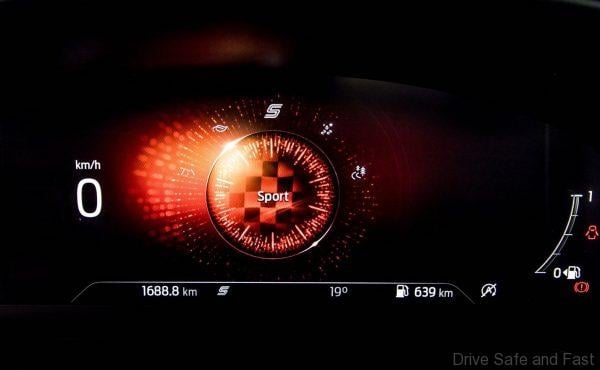
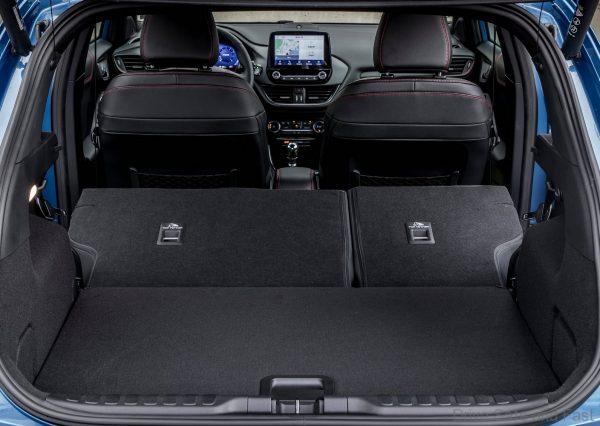

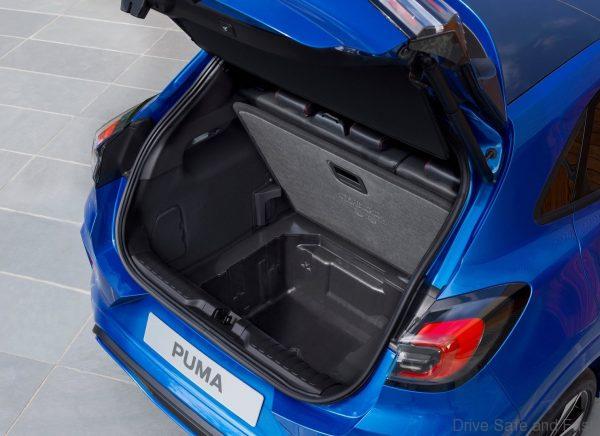


Advanced powertrain technology
Earlier this year, Ford announced that every one of the company’s nameplates launched from the all-new Focus onwards will include an electrified option. Puma customers will be among the first to benefit from Ford’s sophisticated mild-hybrid architecture – tailored to enhance fuel efficiency while complementing Ford’s fun to drive experience with more powerful and responsive performance.
EcoBoost Hybrid technology enhances Ford Puma’s 1.0-litre EcoBoost petrol engine with an 11.5 kW belt-driven integrated starter/generator (BISG). Replacing the standard alternator, the BISG enables recovery and storage of energy usually lost during braking and coasting to charge a 48 volt lithium-ion air-cooled battery pack.
The BISG also acts as a motor, seamlessly integrating with the low-friction, three-cylinder engine and using the stored energy to provide torque assistance during normal driving and acceleration, as well as running the vehicle’s electrical ancillaries.
Offered in 125 PS and 155 PS variants, the intelligent, self-regulating mild-hybrid system continuously monitors how the vehicle is being used to determine when and how intensively to charge the battery for optimal benefit, and when to utilise the stored battery charge using one of two strategies:
- Torque substitution, which deploys the electric motor functionality of the BISG to provide up to 50 Nm of torque – reducing the amount of work required from the petrol engine for a fuel efficiency improvement of up to 9 per cent, based on WLTP analysis. Torque substitution contributes to CO2 emissions from 124 g/km and fuel efficiency from 5.4 l/100 km for the 125 PS variant, and CO2 emissions from 127 g/km and fuel efficiency from 5.6 l/100 km for the 155 PS variant
- Torque supplementation, which deploys the electric motor functionality of the BISG to increase the total torque available from the powertrain by up to 20 Nm above the level available from the petrol engine alone at full load – and deliver up to 50 per cent more torque at lower rpm – for optimised performance
- The electric torque assistance helps deliver punchier, more responsive performance, with up to 50 per cent more torque available at lower engine speeds, for a more flexible and connected driving experience. The BISG has also enabled Ford engineers to lower the 1.0-litre EcoBoost engine’s compression ratio and add a larger turbocharger for more power, by mitigating turbo-lag using torque supplementation that also rotates the engine faster for maintained turbocharger boost response.
Able to restart the engine in approximately 300 milliseconds – about the same as the blink of an eye – the BISG also enables the Puma EcoBoost Hybrid’s Auto Start-Stop technology to operate in a wider range of scenarios for even greater fuel savings, including when coasting to a stop below 15 km/h (10 mph) and even when the vehicle is in gear with the clutch pedal depressed.
In addition, customers can choose from advanced range of Ford EcoBoost petrol and Ford EcoBlue diesel engines that are supported by standard Auto Start-Stop for further reduced running costs, and a slick-shifting six-speed manual transmission.
Ford Puma’s 125 PS 1.0-litre EcoBoost engine will deliver 131 g/km CO2 emissions and 5.8 l/100 km fuel efficiency. A diesel powertrain option and seven-speed automatic dual-clutch transmission will join the line-up after launch.
Ford Puma’s 1.0-litre EcoBoost and EcoBoost Hybrid powertrains also feature Ford’s industry-first cylinder deactivation system for a three-cylinder engine, which automatically switches off one the engine’s cylinders when full capacity is not needed, such as when coasting or cruising. The system can disengage or re-engage one cylinder in 14 milliseconds.
Puma further optimises Ford’s B-car architecture that also delivers class-leading driving dynamics for the Ford Fiesta. A new, stiffer twist-beam rear suspension, larger shock absorbers, stiffer suspension bushes and optimised suspension top mounts reduce friction and enhance stiffness throughout the chassis to support best-in-class driving dynamics.
Confidence-inspiring technologies
Puma utilises 12 ultrasonic sensors, three radars and two cameras positioned around the car to deliver a suite of Ford Co-Pilot360 technologies that enhance protection, driving and parking, and are designed to make the driving experience more comfortable, less demanding and safer.
Enabled by the seven-speed automatic gearbox, Adaptive Cruise Control with Stop & Go, Speed Sign Recognition and Lane Centring helps the vehicle maintain a comfortable driving distance from vehicles ahead. The system also helps reduce stress during long road trips by keeping the vehicle centred in its lane, and can adjust the vehicle speed to within legal limits by monitoring the roadside and overhead gantries for speed signs. This is in addition to using information from the on-board navigation system.
Stop & Go enables the Adaptive Cruise Control system to bring the vehicle to a complete halt in stop-start traffic using up to 50 per cent of total braking force, and automatically pull away if the stopping duration is less than 3 seconds. For stopping durations greater than 3 seconds, the driver can push a steering wheel button or gently apply the accelerator pull away.

New Local Hazard Information functionality – enabled by the FordPass Connect on-board modem – can inform drivers of a hazardous situation on the road ahead, even if the incident is not visible due to a bend in the road or other vehicles.
Local Hazard Information notifications are delivered independent of sat-nav, based on up-to-the minute data provided by HERE Technologies – sourced from local authorities, emergency services, and driving data from other vehicles connected to “the cloud”.
Notifications of hazards including road works; broken down vehicles; animals, pedestrians and objects in the carriageway; and even hazardous driving conditions are delivered to the vehicle over-the-air, giving drivers advanced warning of developing situations beyond their field of vision.
For the first time on a B-segment Ford, a rear wide-view camera captures a 180-degree view that can be displayed on a touchscreen inside the car – so passing pedestrians, cyclists and other vehicles can be more easily seen when reversing out of parking spaces or driveways.
Also helping Ford Puma drivers reverse with greater confidence, Ford’s Blind Spot Information System (BLIS) with Cross Traffic Alert can provide a warning when reversing of vehicles that may soon be crossing behind them. The system can apply the brakes to avoid or mitigate the effects of collisions if drivers do not respond to warnings.
Ford’s Active Park Assist with Perpendicular Parking helps drivers find suitable spaces and park hands free nose-to-tail and side-by-side with other cars. Auto high beam technology can automatically dip the Puma’s headlights to prevent dazzling oncoming drivers.
Further enhancing Ford’s Lane-Keeping System, Road Edge Detection functionality can recognise where a paved road transitions to an impassable surface, such as a soft verge, gravel hard shoulder, or grass. The system can apply a torque to the steering wheel to prevent the vehicle from drifting off the carriageway.
Ford Puma technologies also help drivers negotiate busy urban environments. Pre-Collision Assist with Pedestrian Detection can detect people who are in or near the road ahead, or who may cross the vehicle’s path. The system is designed to reduce the severity of some frontal collisions involving vehicles and pedestrians, or help drivers avoid some impacts altogether. Puma features an enhanced version of the technology with a wider camera angle that helps better track pedestrian movements.
Should an accident occur, Post-Collision Braking technology helps to reduce the impact of a potential secondary collision by automatically applying moderate brake pressure when an initial collision event is detected; slowing the vehicle can potentially lessen injury to occupants and further damage to the vehicle.
Additional technologies designed to help Puma drivers avoid accidents include:
- Evasive Steering Assist, designed to operate at city and motorway speeds, which uses radar and a camera to detect slower-moving and stationary vehicles ahead and provides steering support to enable drivers to manoeuvre around a vehicle if a collision is imminent
- Wrong Way Alert uses a windscreen mounted camera and information from the car’s navigation system to provide drivers with audible and visual warnings when driving through two “No Entry” signs on a motorway ramp
- “Puma is offered with an unprecedented array of technology for its segment,” Steffens said. “Features from wireless charging to Stop & Go are designed to fit seamlessly into owners’ lives, and make driving Puma an effortless and intuitive experience.”
Innovative and inviting
Ford Puma’s innovative and upscale interior is designed to help owners take control of – and offer a sanctuary from – the pressures of everyday life.
Puma’s segment-first lumbar massage front seats revitalise tired muscles and contribute to more relaxing journeys. The three-bladder massage system features three intensity settings and adjustable rolling directions.
Front seats feature a sculpted slim-back design that maximises knee clearance for second row passengers, while the second row bench seat contour has been designed to improve ingress and egress. The driver’s seat is also height adjustable.
Front and rear seats are offered with removable, washable seat covers depending on Puma variant, which make it easier than ever to keep the interior like new. Customers can even personalise the interior with different colours and designs, with the integrated zipper making it easy for owners to remove covers with one hand.
In addition, a full-length openable panorama roof comprising two almost-full width panes of toughened, tinted glass creates an even more spacious and airy feel for occupants in the front and rear.
Helping drivers stay on top of busy work and social lives, innovative features include a wireless charging pad for effortlessly recharging smartphones on the move. Removing the need to occupy one of the Ford Puma’s two USB inputs with a charging cable, the pad sits just beneath the instrument panel and will detect compatible devices to automatically initiate charging.
Devices can remain connected via Bluetooth to Ford’s SYNC 3 communications and entertainment system while using wireless charging, allowing Puma drivers to control audio, navigation and connected smartphones using simple voice commands. The system delivers Apple CarPlay and Android Auto™ compatibility at no extra cost, and is supported by an 8-inch central touchscreen that can be operated using pinch and swipe gestures.
FordPass Connect on-board modem technology turns Puma into a mobile WiFi hotspot with connectivity for up to 10 devices. The system allows a range of convenient features via the FordPass mobile app, including Vehicle Locator; Vehicle Status that checks fuel levels, alarm status, oil life and more; remote Door Lock Unlock; and Remote Start for models equipped with the seven-speed automatic transmission.
An available B&O Sound System has been dynamically tuned to ensure a premium audio experience regardless of the driving conditions.
The 10-speaker system includes a 150 mm by 200 mm externally coupled subwoofer integrated into the boot without compromising luggage space, and delivering a smooth bass tone. The tweeter positions have been optimised to produce a wider sound stage at seating level, delivering an enveloping listening experience for all occupants. The system is powered by a 575-watt Digital Signal Processing Amplifier that controls equalisation and audio mixing including selectable Surround Sound.
In addition, a 12.3-inch fully-configurable digital instrument cluster allows drivers to personalise and prioritise display of information including driver assistance technology and sat-nav notifications. The cluster uses free-form technology that allows curved upper edges for seamless interior design. The free-form panel features circuitry embedded across the display, enabling designers to mould it into shapes beyond the traditional rectangular design.
In addition, the 24 bit “true colour” digital instrument cluster generates detailed, high definition, more intuitive images and icons displayed in the full colour spectrum, making them brighter, less tiring on the eyes and easier to read.

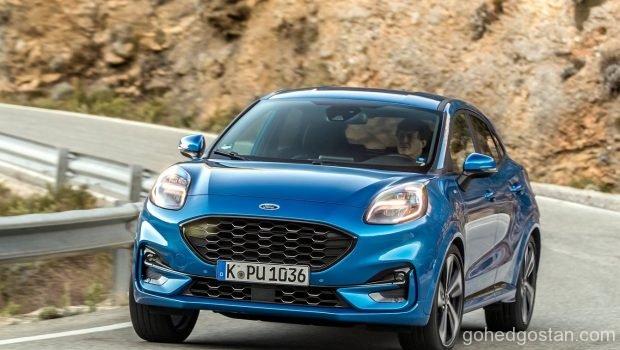

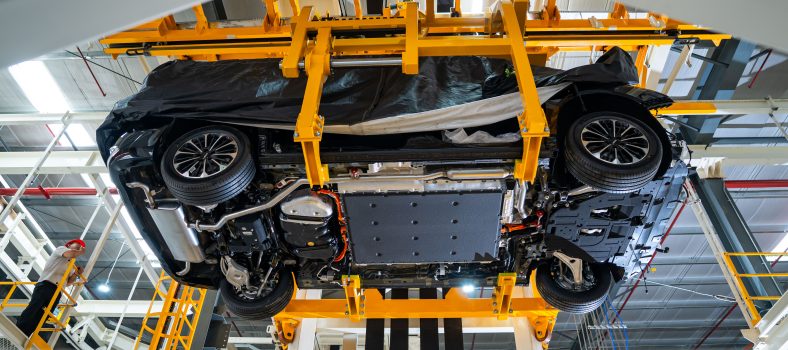
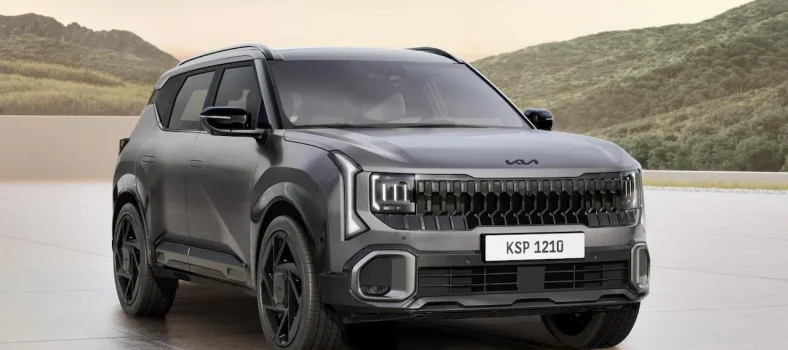
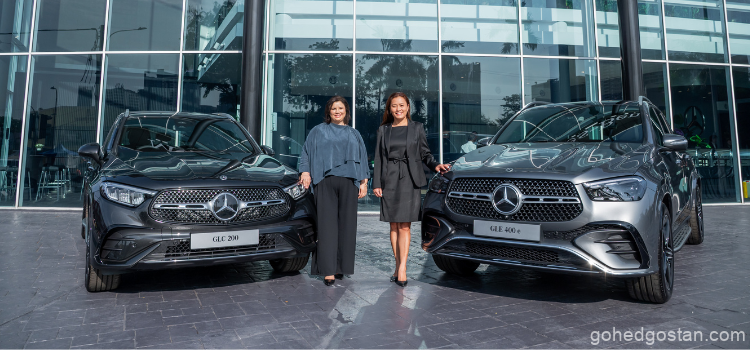
No Comment